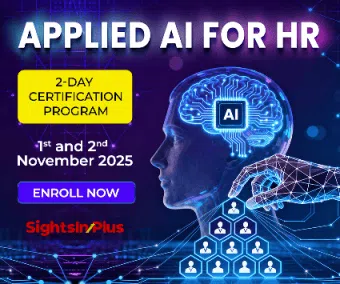The conversation about employee experience, or EX, started about five years ago when it was predicted as the new evolution from employee engagement for defining how companies should interact with their workforce.
Considering this was a departure from the unidirectional company-employee flow of interaction, often aided by once-in-a-year engagement survey where employees were asked how they felt about a static set of dimensions and results rarely indicating how work got done or how engagement enhanced performance; the shift to EX reflected a move towards employees being at the center of driving organisational performance.
“In these few odd years, the HR technology market evolved substantially with AI-enabled platforms available across attraction, hiring, onboarding, engaging, performance and at the developing stages of an employee’s lifecycle.”
Coupled with advanced analytics platforms, employee self-service modules and collaboration/communication platforms like Microsoft Teams, Zoom, technology has played a significant role in helping the HR teams explore the promising proposition of EX.
The year 2020 propelled this change at multiple levels and the importance of EX emerged as center stage for organisations. With many employees reconsidering their organisations, roles and work lives based on what is purposeful for them; most employees continue to opt for remote work to retain the flexibility for their work-life integration; some employees are giving up their corporate lives and choosing to become gig workers to decide when, who and what they will work on; and many others choosing to become entrepreneurs; the war for talent in 2021 has intensified extensively.
And to navigate this landscape, where monetary compensation is no longer the primary motivating factor for employees, companies are outlining a holistic EX plan as a company strategy to create a promising competitive advantage; and one that goes well beyond the HR moments that matter – to encompass every interaction that happens along with the employee lifecycle.
Below are the key pillars to build an employee experience proposition for your organisation:
Start With an EX Strategy That is Linked With Driving Organisational Performance
The time for a piece-meal, fragmented approach to employee experience has long gone. For organisations to win in the talent marketplace, it needs to go beyond that one app or platform or policy to a more integrated and an overarching EX strategy that aims to ignite employees’ enthusiasm to do meaningful work and empowers them to deliver to the organisation’s goals in a way that is fulfilling and rewarding for them.
Define An Expansive EX Scope and Mission and Build A Cross-Functional EX Team
For EX to deliver, the scope of EX needs to be expansive to include everything that touches an employee’s work, career, and life journeys. A typical example of an EX scope would be to devise purposeful work, empowering and supportive leadership, autonomy to deliver, a good job, and team fit, regular coaching, and feedback, fair management of performance, health and well-being support, cohesive culture and environment, growth & learning opportunities continued flexible ways of working, trust in leadership and focus on community and society contributions.
A cross-functional team of HR, Finance, IT, Facilities, Health, Well-Being, and Safety ought to come together and use design thinking across employee segments, to define employee journeys across moments that matter and then turn them around to make them extraordinary.
Make ‘Employee Listening’ a Value to Constantly Improve Your EX Program
The EX program is about the employees and by the employees. And if last year has taught us something, it is the critical need to constantly listen to employees on what they want. When an organisation listens, and reacts to the collective feedback, leaders make better decisions and employees feel more engaged.
Using technology to seek employee feedback through multiple channels and channelising the feedback into respective employee journeys to drive action; and furthermore, using the product management approach to constantly improve the employee journeys builds an ever-improving employee value proposition for the employees as well as prospective candidates.
Enhance Your Culture Quotient
Enhance your culture quotient by investing in the manager, leadership development as well as all-employees development to live & display the company’s values and behaviours.Experience is lived, deeply felt and highly personal, and while technology can be leveraged to a great extent to deliver it, organisations cannot undermine the role that managers, leaders and colleagues play in delivering an extraordinary experience to the employees.
Managers and leaders should be developed on leading from the inside out to drive a more humane, empowering and hands-on leadership; and all employees should be developed on living and displaying the company’s values and behaviours to contribute towards a sustainable collaborative and supportive work environment.
Measure It
The EX programwill require organisationsto move beyond annual or biannual engagement surveys to regular pulse surveys and multi-channel feedback systems. Instituting an employee net promoter score which yields a numerical value of the experience can be a good way to measure the effectiveness of the EX program.
Just like the Product and Marketing teams have moved beyond customer satisfaction to look at total customer experience, a core part of any people strategy should be to move away from employee satisfaction to adopting and continuously improving EX, even as the definition of ‘employee’ expands. And the correlation between engaged employees and happy customers is well established by many research studies. In Sir Richard Branson’s words, “Clients do not come first. Employees come first. If you take care of your employees, they will take care of the clients.”
Note: The views and opinions expressed in this article are those of the author and do not necessarily reflect the official position of Tata Communications Ltd.



